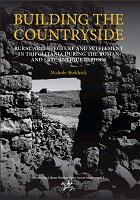Building the Countryside
Rural Architecture and Settlement in the Tripolitanian Countryside
Author(s)
Sheldrick, Nichole
Collection
Knowledge Unlatched (KU)Language
EnglishAbstract
This volume brings together data collected from both previously published surveys and new data collected using satellite imagery on the architecture and construction of over 2,400 rural structures in nine different regions of Tripolitania and dating between the 1st c. BC and the 7th c. AD. This first part contextualises the material within the historical background of Tripolitania, previous investigations and methodological foundations, the evidence for pre-Roman architectures and settlement, and the chronology of rural settlement during the period under study based on ceramic evidence. The second part presents quantitative and qualitative analyses of the physical characteristics first of Roman military structures, and then of the main group of buildings under investigation: unfortified and fortified farm buildings. The ways in which different spaces may have been utilised and the spatial relationships between the settlement groups formed by these buildings provide insight into how and why different types of buildings developed in the countryside during between the 1st c. BC and the 7th c. AD. These analyses demonstrate that the rural buildings of Tripolitania can be seen as meaningful reflections not only of the wide variety of activities taking place in the buildings themselves, but also of the varying histories and patterns of land-use in different parts of the region and even the status, wealth, and socio-cultural structures of the people who constructed and lived in them.
Keywords
History; AncientISBN
9781900971782Publisher
Society for Libyan StudiesPublication date and place
2021Imprint
Society for Libyan StudiesClassification
Ancient history


 Download
Download